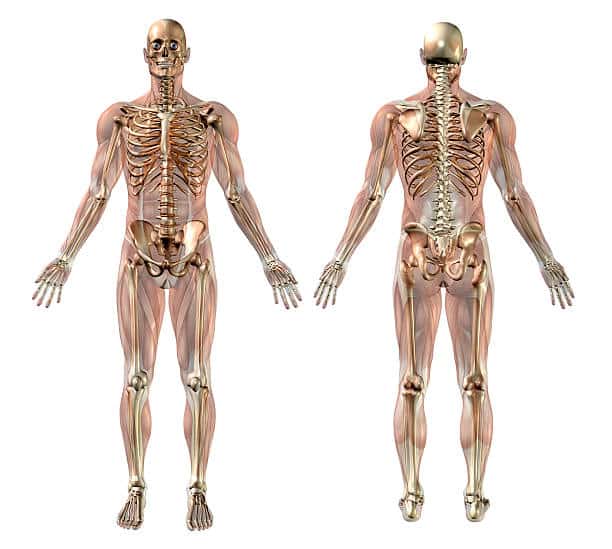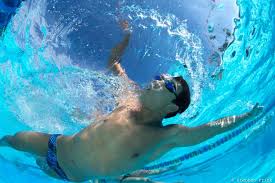Welcome to Part III, our last and final segment of our Freestyle breathing series. If you have read Part’s I and II, you should now have an understanding of the physiology behind the ideal breathing strategy (when to inhale/exhale) and a plan on when to breath during your Freestyle races (depending on their distance).
If you missed Part’s I or II, click the links below to access them:
Part I—[CLICK HERE]
Part II—[CLICK HERE]
This week I plan to finish up this series by talking further about gas exchange and what this does to our buoyancy. Let’s get started…
For the most part, the majority of teams now include vertical kicking into their program. Most coaches understand why vertical kicking is extremely helpful in developing a swimmer’s kick. But, many don’t use this situation to further explain and demonstrate the effects of gas exchange on a swimmers’ buoyancy.
Try this Vertical Kick Set:
3×20 seconds flutter kick
Followed by 15 seconds rest.
Round 1: Both arms are under the water
Round 2: Fingertips and palm point up towards the sky. Wrist stay right at water level.
Round 3: Hands in a Streamline
By Round 3, it should be very hard for your swimmer to keep their head above the water.
Vertical kicking combines four key technical components. They are:
1. A small tight/fast kick
2. Pointing of the toes
3. Kicking in both directions
4. Inhaling and holding air longer in your lungs than exhaling
If a swimmer does not perform one of the four key technical components, it will be very hard to keep their head above water.
If you’d like to learn more about points #1-3, [CLICK HERE] to read my series on Freestyle kick. But for this post, we are going to focus on #4.

How and why does inhaling affect whether our head stays above the water?
It all boils down to density (see what I did there ).
Water is 784x more dense than air. This means when you put something that’s heavier (or more dense) in water, it will sink. Or if you put something that’s lighter (or less dense) in water, it will float.
The human body is made up of approximately 70% water. And it is because we are only made of 70% water, that humans have a tendency to sink in the pool.

There are three main tissues that make up our body: muscle, fat, and bone. Each of these three tissues carry their own respective densities. See below:
Muscle’s density ~ 1.06 g/cm3.
Fat’s density ~ 0.9 g/cm3.
Bone’s density ~ 1.9 g/cm3.
If we look at these tissues’ densities in comparison with water (water’s density being 1g/cm3)– muscle will not float or sink due to its’ density being fairly close water’s, fat will float because its’ less dense than water, and bone will sink because its’ density is much higher than water.
Obviously with training, we are able to change the percentage (or amount) that each of these tissues make up a swimmer’s body (i.e. we can gain muscle and lose fat, or gain fat and muscle). But the one tissue whose proportion of body stays relatively the same (with or without training) is bone.
Our bones make up approximately 15% of our entire body. Yes, as we train, we can technically increasing our bone density BUT, that only further reinforces my answer that bone will always sink in water (due to its’ higher density) and our body will always be composed of 15% bone.
If we go back to our vertical kicking set and look at Round 3, as the swimmer vertical kicks in a streamline position—they naturally sink. Why?
Bones. The arm bones are lifted above the water.
As a swimmer shifts their arms over their head into a streamline position—we are combining the effect of bone’s heavier density with gravity. The end result is: a swimmer’s body being pushed towards the bottom of the pool.
Depending how good a swimmer is with other three key technical points of vertical kicking, they may be able to combat the components pushing them towards the bottom of pool. Stronger kickers will have an easier time holding themselves at the surface (while kicking in a streamline) but, most swimmers sink or bob somewhere in between.
If we combine what we know about density and looking more specifically at Point #4 of our key technical components of vertical kicking. We will begin to understand why exhaling and releasing air during vertical kicking makes a swimmer less buoyant (go towards the bottom). And inhaling (and holding that air in their lungs) while vertical kicking, makes a swimmer more buoyant (bob up towards the surface).
If we go back to Part I of this series, where I explained “holding onto your air” for 1-2 strokes before you exhale in Freestyle–this is due to the effect of air on our buoyancy.
If we keep air in our lungs for as long as we can, our body will naturally float higher in the water. With this added buoyancy, more of our body swimming through air than water which will significantly reduce our drag.
The fastest and quickest position a swimmer can be in–is a streamline, horizontal position at or slightly above the water’s surface. Let air (for a few brief seconds) help elevate you out of the water. After all, we all have to breathe anyways!

Abbie Fish

One Response